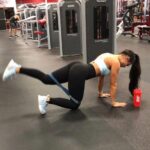Are you looking for a dynamic and effective way to enhance your fitness routine? Look no further than the world of judo. The judo fitness routine offers a unique combination of physical and mental benefits, making it an ideal addition to any workout regimen. From the rich history and philosophy of judo to the specific techniques and training drills, this article will explore how incorporating judo can help improve strength, flexibility, endurance, and overall physical fitness.
Originating in Japan, judo is a martial art that has evolved into a popular form of competitive sport as well as a method of physical training. Its emphasis on leverage, balance, and technique makes it an excellent choice for individuals looking to build functional strength and improve their overall level of fitness. By exploring the history and philosophy behind judo, we can gain a deeper understanding of how this ancient practice is relevant to modern-day fitness enthusiasts.
At its core, judo consists of a variety of fundamental techniques that focus on throwing, grappling, and striking. These techniques not only provide valuable self-defense skills but also offer an effective full-body workout. By breaking down these basic judo moves and understanding how they can contribute to improved strength, flexibility, and overall physical fitness, individuals can tailor their workouts to achieve specific fitness goals.
The History of Judo
Judo, which translates to “the gentle way,” is a martial art that originated in Japan in the late 19th century. It was developed by Jigoro Kano, who integrated various traditional Japanese martial arts techniques into a single system focused on self-defense, physical fitness, and mental discipline. The philosophy behind judo emphasizes maximum efficiency with minimal effort, making it an ideal practice for individuals looking to improve their overall fitness and well-being.
Incorporating judo into a fitness routine not only provides physical benefits but also delves into the rich history and philosophy of this ancient martial art. Judo’s emphasis on flexibility, balance, and technique makes it an excellent form of exercise for individuals of all ages and fitness levels. The core principles of judo – such as mutual welfare and benefit, maximum efficiency, and seiryoku zenyo (best use of energy) – extend beyond the mat and can be applied to everyday life.
Additionally, the history of judo is deeply rooted in Japanese culture and tradition, providing practitioners with a deeper understanding of the art form. By learning about its origins and philosophy, individuals can gain a greater appreciation for the significance of judo in modern fitness routines. Whether practicing as a form of self-defense or as a means to improve physical fitness, understanding the history and principles of judo adds depth and meaning to one’s fitness journey.
Basic Judo Techniques
- Osoto Gari (Major Outer Reap)
- Ouchi Gari (Major Inner Reap)
- Seoinage (Shoulder Throw)
- Uchimata (Inner Thigh Throw)
These techniques not only enhance strength but also help improve overall flexibility and agility. Practicing these fundamental moves regularly can significantly contribute to an individual’s overall fitness level while providing them with valuable self-defense skills.
Basic Judo Techniques
Judo, a martial art that originated in Japan, has gained popularity worldwide as a form of physical fitness and self-defense. The core philosophy of judo revolves around using an opponent’s strength against them, making it an excellent full-body workout that enhances strength, flexibility, and overall fitness. By mastering fundamental judo moves, individuals can improve their physical condition while also learning valuable self-defense skills.
Here are some basic judo techniques that are integral to improving strength, flexibility, and overall fitness:
- Osoto-gari (major outer reap): This technique involves using your leg to sweep your opponent off balance and take them down. It requires strength in the legs and core, as well as flexibility to execute the move with precision.
- Uchi-mata (inner thigh throw): Uchi-mata is a dynamic throwing technique that requires explosive power from the legs and hip flexibility to lift and throw the opponent over your hip.
- Seoi-nage (shoulder throw): This judo move focuses on leveraging the shoulder to throw the opponent over your back. It requires upper body strength and flexibility to execute effectively.
By incorporating these fundamental judo techniques into a fitness routine, individuals can improve their overall physical condition while also honing their self-defense skills. Practicing these moves regularly can lead to increased muscle strength, improved flexibility, and enhanced overall fitness levels.
Whether you are a beginner or an experienced practitioner looking to enhance your judo fitness routine, mastering these basic techniques is essential for achieving optimal physical health and self-defense capabilities.
Judo Training Drills
Warm-Up Exercises
Before diving into the specific judo training drills, it’s crucial to start with a thorough warm-up. This helps to prevent injuries and prepares the body for the physical demands of judo training. Warm-up exercises for judo typically include dynamic stretching, joint mobility exercises, and light cardio such as jogging or jumping jacks. These activities help increase blood flow to the muscles, improve flexibility, and loosen up the joints essential for executing judo techniques.
Uchi-Komi (Repetitive Practice)
Uchi-komi is a common drill in judo that involves repetitive practice of throwing techniques without actually executing the throw. This drill allows practitioners to focus on proper form, balance, and coordination while building strength and muscle memory. Uchi-komi drills can be performed with a partner or using resistance bands to simulate the weight and resistance of an opponent.
Ne-Waza (Ground Techniques)
In addition to standing techniques, judo training drills often include ne-waza or ground techniques. This aspect of training focuses on grappling, pinning, choking, and joint-locking techniques used in groundwork. Ne-waza drills not only improve physical fitness by enhancing core strength and overall conditioning but also contribute to better understanding body positioning and leverage during ground combat in judo.
By incorporating these specific exercises and drills into a regular judo fitness routine, individuals can experience a comprehensive workout that targets strength, endurance, flexibility, balance, and agility – all essential components of physical fitness. Whether practiced as a standalone discipline or integrated into a broader fitness regimen, judo offers unique benefits that cater to individuals looking for a challenging yet rewarding exercise program.
Building Strength and Endurance
Judo is not only a martial art but also an effective way to improve overall physical fitness. One of the key benefits of incorporating judo into a fitness routine is the ability to build muscle strength and cardiovascular endurance. The combination of throwing, grappling, and ground fighting in judo requires participants to engage multiple muscle groups simultaneously, leading to increased strength and stamina over time.
In terms of muscle strength, judo training focuses on functional movements that target the core, upper body, lower body, and grip strength. Techniques such as throwing and grappling require explosive power from the legs, hips, and core muscles. As a result, practitioners develop strong quadriceps, hamstrings, glutes, abdominals, back muscles, and arms. This comprehensive approach to strength training contributes to better overall physical conditioning.
Moreover, judo is also effective in improving cardiovascular endurance. The continuous movement and high-intensity nature of sparring matches or randori drills make judo an excellent cardiovascular workout. Engaging in these activities increases heart rate and oxygen consumption which are essential for improving stamina and endurance. Additionally, the intermittent bursts of intense activity followed by periods of rest during training can lead to improved anaerobic capacity as well.
| Judo Technique | Muscles Targeted |
|---|---|
| Osoto Gari (Major Outer Reap) | Hamstrings, Quadriceps |
| Ippon Seoinage (One Arm Shoulder Throw) | Deltoids, Trapezius |
| Kesa Gatame (Scarf Hold) | Abdominals |
Injury Prevention in Judo
Understanding Common Injuries in Judo
Judo is a physically demanding sport that requires agility, strength, and coordination. As such, participants are at risk for certain injuries, including shoulder and knee injuries, sprains, strains, and fractures. Understanding the common types of injuries that can occur during judo training is crucial for individuals looking to incorporate this martial art into their fitness routine. By recognizing these potential risks, practitioners can take proactive steps to prevent injury and maintain their overall health and well-being.
Preventative Measures in Judo Training
To minimize the risk of injury while practicing judo, it’s essential to prioritize proper warm-ups and dynamic stretching exercises before each training session. This helps to prepare the muscles and joints for the physical demands of judo, reducing the likelihood of strains or tears.
Additionally, learning proper falling techniques – such as ukemi – is pivotal in preventing serious injuries from throws or takedowns. Mastering these fundamental skills not only improves safety but also builds confidence in one’s ability to navigate through potentially risky situations during training.
Staying Safe in Judo Fitness Routine
Safety should always be a top priority when integrating judo into a fitness routine. Practitioners should listen to their bodies and avoid pushing themselves beyond their physical limitations to prevent overuse injuries or excessive strain.
Utilizing protective gear such as mouthguards, padded mats, and supportive footwear can also contribute significantly to injury prevention during judo training sessions. By implementing these preventative measures and prioritizing safety at all times, individuals can fully enjoy the benefits of incorporating judo techniques into their fitness routine without compromising their physical well-being.
Nutrition for Judo Fitness
Judo is a physically demanding martial art that requires a combination of strength, agility, and endurance. As such, it is essential for judo practitioners to pay close attention to their diet and nutrition in order to optimize their fitness and performance. Proper nutrition not only fuels the body for intense training sessions but also supports recovery and overall well-being.
One key component of a judo fitness routine is ensuring that practitioners are consuming enough protein to support muscle repair and growth. Lean sources of protein such as chicken, turkey, fish, eggs, tofu, and legumes are excellent options for judo athletes. Additionally, carbohydrates play a vital role in providing the energy necessary for intense training sessions. Whole grains, fruits, and vegetables are rich in complex carbohydrates and can help sustain energy levels throughout the day.
In addition to macronutrients like protein and carbohydrates, judo athletes should also focus on consuming an adequate amount of healthy fats. Omega-3 fatty acids found in foods like salmon, chia seeds, and walnuts can help reduce inflammation in the body and support optimal joint health – both crucial factors for judo practitioners. Lastly, staying hydrated is essential for any fitness routine.
Water is critical for regulating body temperature, lubricating joints, and transporting nutrients throughout the body. Judo athletes should aim to drink plenty of water throughout the day to support their training efforts.
| Food Group | Examples |
|---|---|
| Protein | Chicken, turkey, fish, eggs, tofu |
| Carbohydrates | Quinoa, brown rice, sweet potatoes |
| Healthy Fats | Avocado, nuts & seeds, olive oil |
| Fruits & Vegetables | Berries, spinach, broccoli |
Judo Fitness Routine Sample
In conclusion, incorporating judo into a fitness routine offers numerous benefits for individuals at all levels of experience. From building strength and endurance to improving flexibility and overall physical fitness, judo provides a unique and challenging workout that can be tailored to meet individual fitness goals. By understanding the history and philosophy of judo, individuals can gain a deeper appreciation for this ancient martial art and its relevance to modern fitness.
With a focus on basic judo techniques and training drills, practitioners can enhance their physical fitness in a dynamic and engaging way. Furthermore, by prioritizing injury prevention and proper nutrition, individuals can ensure that they are safely maximizing the benefits of their judo fitness routine.
For those looking to start their journey with a judo fitness routine, there are sample routines available for beginners, intermediate, and advanced practitioners. These routines not only serve as a guide but also as a source of inspiration for individuals embarking on their own fitness journey using judo techniques.
Whether it’s mastering fundamental moves or pushing physical boundaries through advanced training drills, judo offers endless possibilities for improving overall health and wellness through its unique combination of physical exertion and mental discipline.
Frequently Asked Questions
What Exercises Are Good for Judo?
Exercises that are good for Judo include those that focus on building strength, agility, flexibility, and cardiovascular endurance. These can include bodyweight exercises, resistance training, plyometric exercises, and agility drills to improve overall physical conditioning.
Can You Get Fit From Judo?
Yes, you can definitely get fit from Judo. Judo requires a combination of strength, agility, flexibility, and cardiovascular endurance. Training in Judo involves intense physical activity such as throwing opponents, grappling, and ground fighting which all contribute to improved fitness levels.
Should I Lift Weights for Judo?
It can be beneficial to lift weights for Judo to build strength and power. However, it’s important to focus on functional movements that mimic the actions used in Judo such as squats, deadlifts, rows, and presses rather than simply lifting heavy weights without considering the specific demands of the sport.

Passionate about providing useful information to anyone with an interest in the field of Personal Training, I strive to pass on to our readers quality information and to answer any questions about Personal Trainers, the work they do and how to become one.





